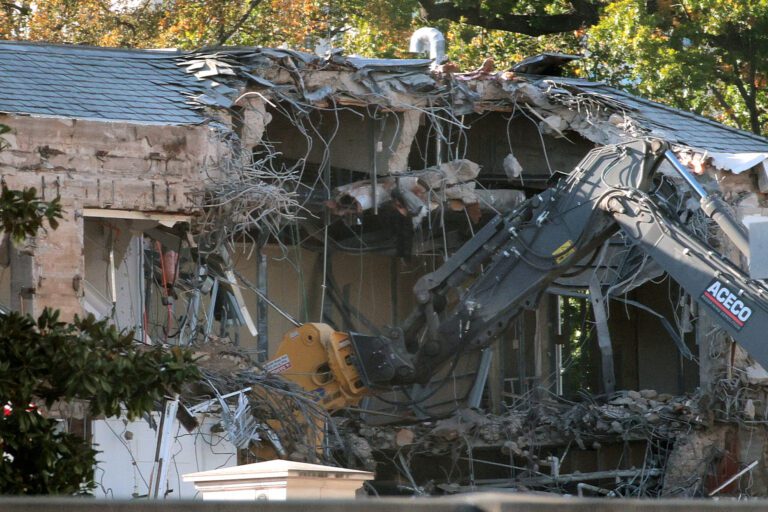Trump Dismisses Members of the Commission on Fine Arts: A Shift in Washington’s Aesthetic Oversight
In a surprising move, President Trump has terminated all six members of the Commission of Fine Arts, an independent federal agency charged with advising the government on design and aesthetic issues in Washington, D.C. This decision comes as he embarks on significant construction projects in the nation’s capital.
The Dismissed Commissioners
The following members, all appointed by President Biden and serving four-year terms, have been removed:
- Peter Cook
- Hazel Edwards
- Justin Moore
- Billie Tsien
- Bruce Becker
- William Lenihan
The dismissals were communicated via email stating:
“On behalf of President Donald J. Trump, I am writing to inform you that your position as a member of the Commission on Fine Arts is terminated, effective immediately.”
This news, reported by the Washington Post, follows a pattern of similar firings involving Biden appointees from various boards, including the National Capital Planning Commission and the U.S. Holocaust Memorial Council.
Understanding the Commission on Fine Arts
Established by Congress in 1910, the Commission on Fine Arts plays a vital role in shaping the architectural landscape of Washington, D.C. Responsibilities include:
- Advising on arts and national symbols
- Guiding the architectural development in the capital
- Reviewing proposed designs for memorials, government buildings, coins, and privately owned properties in specific areas
Typically composed of seven members, the commission is pivotal in ensuring that the city’s aesthetic remains consistent with its historical significance.
The Context of the Dismissals
The firings coincide with Trump’s ambitious construction plans, particularly the planned overhaul of the White House East Wing. This project includes a proposed 90,000-square-foot ballroom, estimated to cost around $300 million, to be funded by Trump himself and donors.
A White House official clarified:
“Construction plans have not yet been submitted to the National Capital Planning Commission but will be soon.”
The dismissal raises questions about whether the Commission of Fine Arts would have had jurisdiction over the ballroom project, as regulations regarding building alterations may not apply directly to the White House.
The Impending White House Ballroom
- Jurisdiction and Approvals: The White House is anticipated to require approval only from the National Capital Planning Commission to move forward. Arts commission jurisdiction may not begin until actual construction starts.
- Current Status: White House staff secretary Will Scharf has been appointed chairman of the National Capital Planning Commission and noted that the commission would only play a role after the East Wing is demolished.
Calls for Transparency
In light of these developments, the National Trust for Historic Preservation recently urged the Trump administration to delay the demolition of the 123-year-old East Wing. Their letter emphasized the need for:
- Public Review Processes: The letter highlights the importance of public input and transparency in modernizing historical sites, pointing out that both the National Capital Planning Commission and the Commission of Fine Arts should be consulted.
“These processes provide an essential opportunity for transparency and public engagement,” the Trust stated, advocating for honoring the historic significance of the White House.
Future Plans: A Triumph Arch
Apart from the ballroom, Trump is also considering a triumphal arch to commemorate the 250th anniversary of the Declaration of Independence. Unlike the White House project, this arch would be built on federal land and would be subject to standard review processes.
Conclusion
The dismissal of the Commission on Fine Arts members by President Trump marks a significant shift in how design and aesthetic matters are tackled in Washington. As ambitious construction projects unfold, the emphasis on public consultation will remain a point of contention. The future of Washington’s architectural landscape may well depend on how these developments unfold.
For more information on the responsibilities of the Commission of Fine Arts and the implications of these recent changes, visit their official website.


